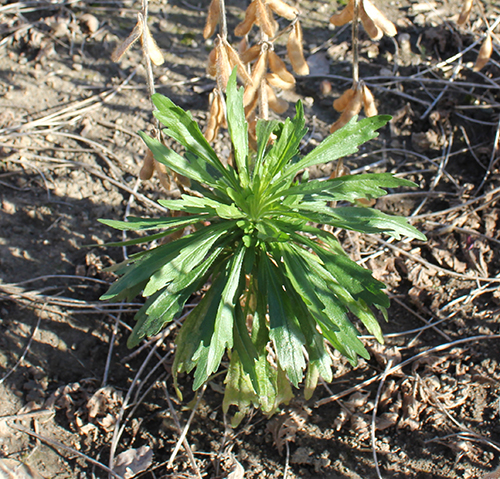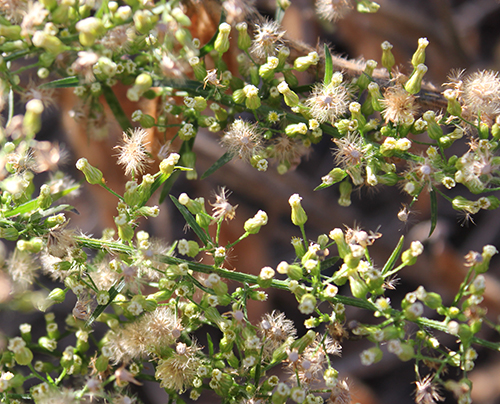Horseweed concerns are mounting for farmers
Horseweed, commonly referred to as marestail, continues to spread across Michigan.

As harvest continues across Michigan, many farmers are experiencing firsthand the infestation of horseweed, commonly known as marestail. Farmers are saying the weed problem is spreading faster than they expected. The problem is that large populations of horseweed can aggressively compete with soybeans and reduce crop yield, so good control is essential.
Horseweed is an annual weed that can follow a winter or summer annual life cycle. While historically the majority of horseweed would emerge in the fall, we are seeing more and more horseweed emergence in spring and summer. What this means is that fall emerging plants can survive the winter and finish their life cycles in the summer of the following year. Plants that emerge in the spring and summer can also mature during the growing season and disperse seed in the fall. Each plant can produce up to 200,000 seeds that travel long distances in the wind (Photo 3).
A major challenge for farmers is much of the horseweed found in Michigan has shown multiple resistance to the herbicide sites of action found in glyphosate (e.g., Roundup) and ALS-inhibiting herbicides (e.g., FirstRate and Classic). Because horseweed is resistant to multiple herbicide sites of action, control becomes much more difficult and expensive.
Farmers are encouraged to have a primary goal of controlling emerged plants in the fall or spring, especially in fields with a history of horseweed control problems.

Photo 2. A late emerging horseweed bolting.
Michigan State University Extension weed scientist Christy Sprague offers the following tips for controlling horseweed.
- Control horseweed prior to planting. Use fall or early spring hericide treatments in fields where horseweed seedlings are observed and especially in fields with a history of horseweed-control problems. Controlling horseweed is more effective when plants are in the rosette stage or less than 2 inches tall and before stem elongation.
- Include effective residual (PRE) herbicides with burndown treatment. Do not plant into existing stands of horseweed. Start weed-free at planting.
- Thorough tillage close to planting also effectively removes horseweed. Farmers that use a one-pass vertical tillage or minimum till do not effectively uproot the plants sufficiently for control.

Photo 3. Horseweed seeds ready to disperse.
For more information, contact Phil Kaatz at 810-667-0341 or kaatz@msu.edu.
Additional resources and information
- MSU Weed Science – information on identifying and managing herbicide-resistant weeds
- Controlling Horseweed (Marestail), by MSU
- Reducing spread of herbicide-resistant weed seed during harvest and tillage operations, by MSU Extension
- Cumulative Map of Herbicide Resistant Weeds In Michigan, by MSU Diagnostic Services
- Herbicide-resistant horseweed (marestail) in Michigan: Keys to management in no-till soybean, by MSU



 Print
Print Email
Email